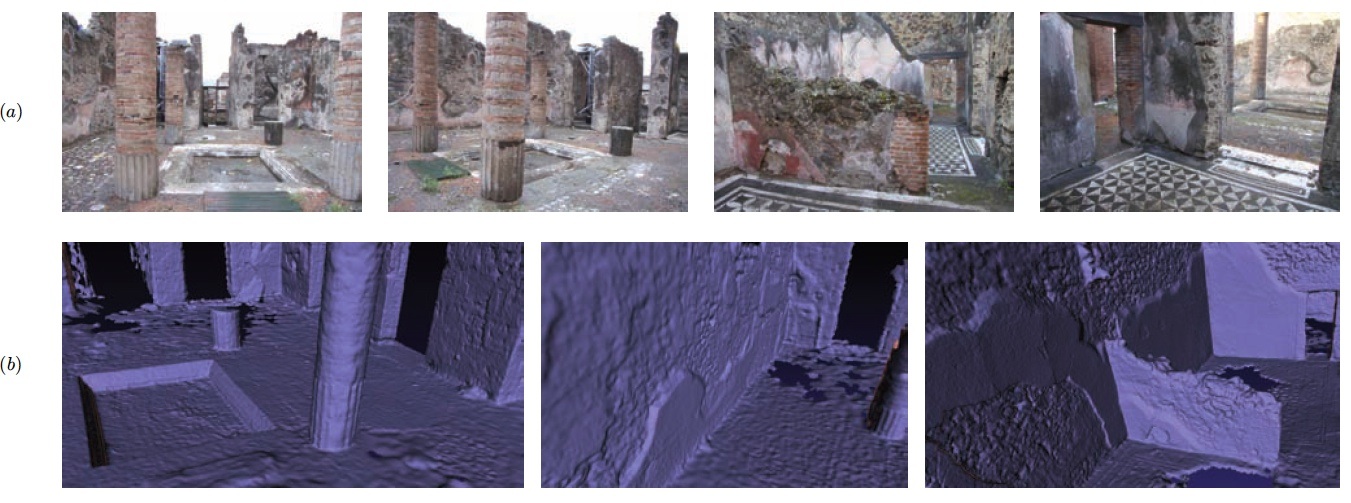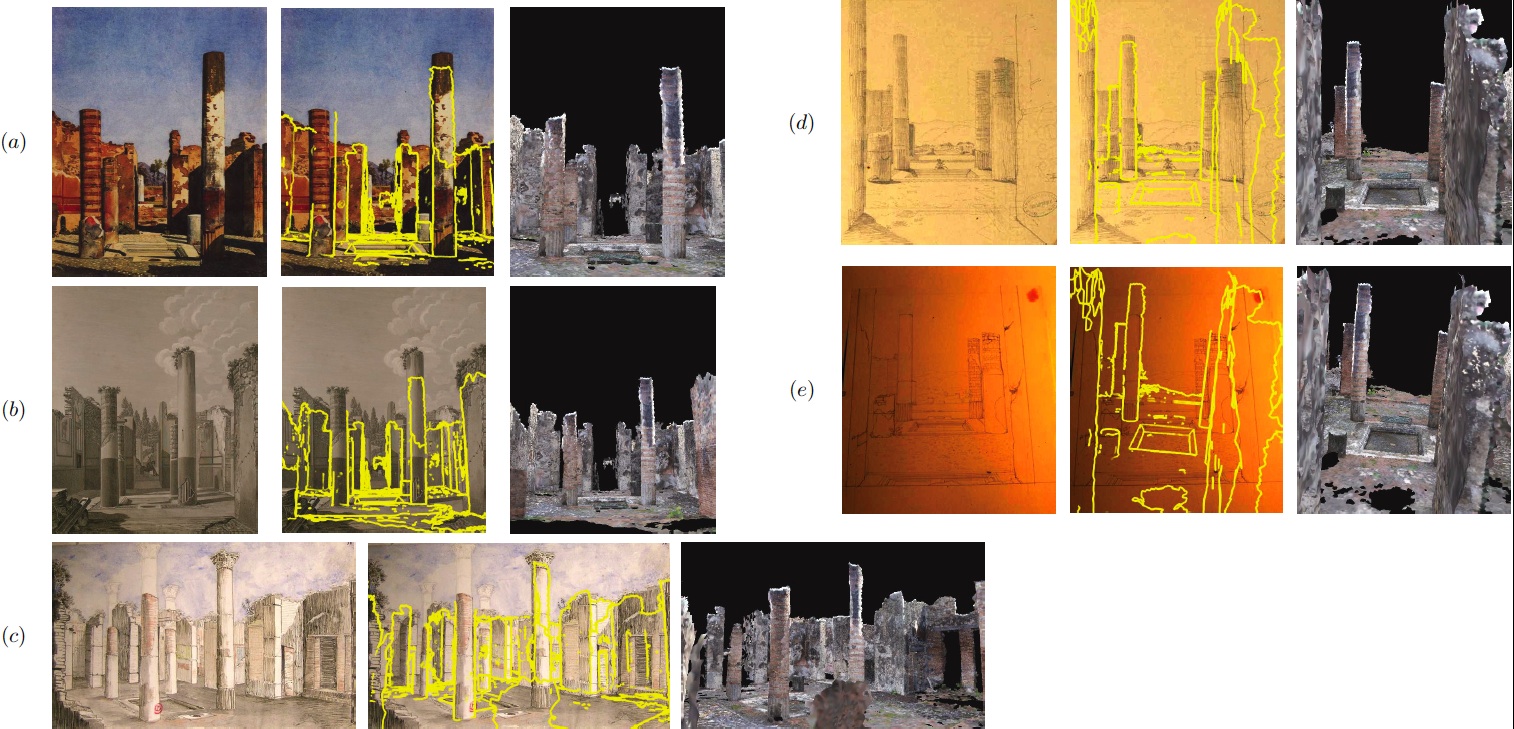Section: New Results
3D object and scene modeling, analysis, and retrieval
Quantitative image analysis for archeology
Participants : Bryan Russell, Jean Ponce, Josef Sivic, Helene Dessales [ENS Archeology laboratory] .
|
Accurate indexing and alignment of images is an important problem in computer vision. A successful system would allow a user to retrieve images with similar content to a query image, along with any information associated with the image. Prior work has mostly focused on techniques to index and match photographs depicting particular instances of objects or scenes (e.g. famous landmarks, commercial product labels, etc.). This has allowed progress on tasks, such as the recovery of a 3D reconstruction of the depicted scene.
However, there are many types of images that cannot be accurately aligned. For instance, for many locations there are drawings and paintings made by artists that depict the scene. Matching and aligning photographs, paintings, and drawings is extremely difficult due to various distortions that can arise. Examples include perspective and caricature distortions, along with errors that arise due to the difficulty of drawing a scene by hand.
In this project, we seek to index and align a database of images, paintings, and drawings. The focus of our work is the Championnet house in the Roman ruins at Pompeii, Italy. Given an alignment of the images, paintings, and drawings, we wish to explore tasks that are of interest to archaeologists and curators who wish to study and preserve the site. Example applications include: (i) digitally restoring paintings on walls where the paintings have disappeared over time due to erosion, (ii) geometrically reasoning about the site over time through the drawings, (iii) indexing and searching patterns that exist throughout the site.
|
Recently, we have addressed the problem of automatically aligning historical architectural paintings with 3D models obtained using multi-view stereo technology from modern photographs. This is a challenging task because of the variations in appearance, geometry, color and texture due to environmental changes over time, the nonphotorealistic nature of architectural paintings, and differences in the viewpoints used by the painters and photographers. Our alignment procedure consists of two novel aspects: (i) we combine the gist descriptor with the view-synthesis/retrieval of Irschara et al. to obtain a coarse alignment of the painting to the 3D model, and (ii) we have developed an ICP-like viewpoint refinement procedure, where 3D surface orientation discontinuities (folds and creases) and view-dependent occlusion boundaries are rendered from the automatically obtained and noisy 3D model in a view-dependent manner and matched to gPB contours extracted from the paintings. We demonstrate the alignment of XIXth Century architectural watercolors of the Casa di Championnet in Pompeii with a 3D model constructed from modern photographs using the PMVS public-domain multi-view stereo software. Figure 1 shows some of the captured photographs and snapshots of the 3D reconstruction of the site. Notice that the 3D reconstruction captures much detail of the walls and structures. Example painting to 3D model alignments are shown in figure 2 .
This work resulted in a workshop publication [16] .
Visual localization by linear combination of image descriptors
Participants : Josef Sivic, Akihiko Torii [Tokyo Institute of Technology] , Tomas Pajdla [CTU in Prague] .
In this work, we seek to predict the GPS location of a query image given a database of images localized on a map with known GPS locations. The contributions of this work are three-fold: (1) we formulate the image-based localization problem as a regression on an image graph with images as nodes and edges connecting close-by images; (2) we design a novel image matching procedure, which computes similarity between the query and pairs of database images using edges of the graph and considering linear combinations of their feature vec- tors. This improves generalization to unseen viewpoints and illumination conditions, while reducing the database size; (3) we demonstrate that the query location can be pre- dicted by interpolating locations of matched images in the graph without the costly estimation of multi-view geometry. We demonstrate benefits of the proposed image matching scheme on the standard Oxford building benchmark, and show localization results on a database of 8,999 panoramic Google Street View images of Pittsburgh.
This work resulted in a publication [18] .




